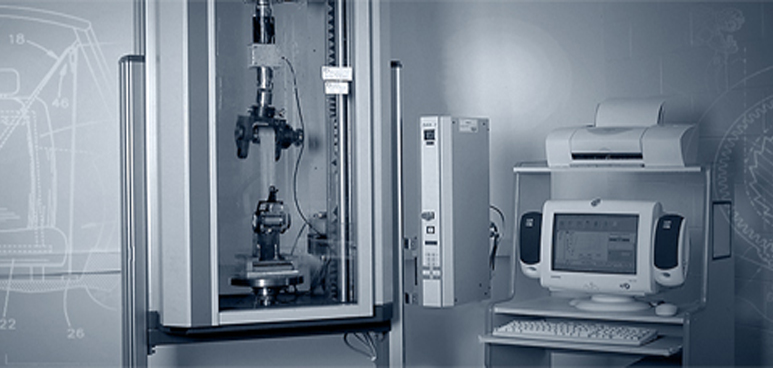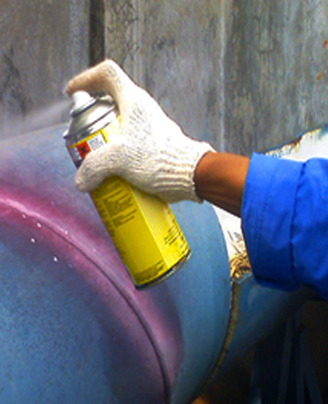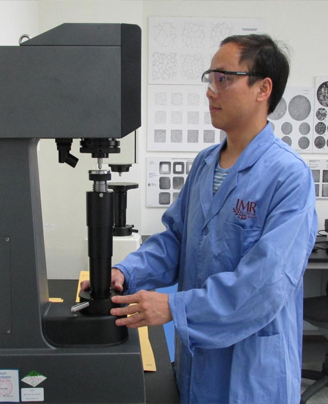
Mechanical Testing
Tohama is a private company was established in Iraq / Basra …. (registration No.000087161- 02 ) providing destructive DT and non-destructive testing NDT and inspection activities throughout qualified inspectors and technicians staff ASNT (American Society for Non-destructive Testing) level ll . They have more than twenty years experience in inspections jobs in many locations and fields, like: rehabilitation for steel structures of the main three bridges in Basra, power plants ,high pressure boilers , main steam lines, they do inspection for most fixed and rotated equipment in a chemical and petrochemical plants such as pressure vessels , heat exchangers, tanks, ,heaters, reformers, separators piping , pipelines, ,valves, safety valves….etc. vacuum and pressure leak testing accordance to related standards and client specification requirements .Our team deals with many types of materials in industry ,carbon steel, low alloy steel, stainless steels….. and they have a good experience more than nineteen years in execution stress relieving PWHT for welding joints ( for piping and their components , pressure vessels and tanks ). Tohama staff have inspectors that executing NDT inspections on rotary equipments like pumps ,rotors ,compressors, fans ,turbines ,gears and capable to check dimensions , run out ,tolerances ,clearances and alignment…etc.

 TOHAMA undertakes X-ray. Radiographic inspection is based on the exposure x ray. The principle of industrial radiography is Differential Absorption. This means that different materials absorbs different amount of radiation based on thickness variation, density or presence of defects like cracks, lack of fusion, lack of penetration, gas porosities slag, undercuts etc. Tohama have 300KV & 250KV Xray equipments and their accessories for radiation safety requirements ,manual and auto film processing type COMPACT 2 NDT.
TOHAMA undertakes X-ray. Radiographic inspection is based on the exposure x ray. The principle of industrial radiography is Differential Absorption. This means that different materials absorbs different amount of radiation based on thickness variation, density or presence of defects like cracks, lack of fusion, lack of penetration, gas porosities slag, undercuts etc. Tohama have 300KV & 250KV Xray equipments and their accessories for radiation safety requirements ,manual and auto film processing type COMPACT 2 NDT.
 The Liquid Penetrant Inspection method is applicable for inspecting material or components when attempting to locate flaws open to the surface of mostly nonporous material.
The Liquid Penetrant Inspection method is applicable for inspecting material or components when attempting to locate flaws open to the surface of mostly nonporous material. Magnetic particle inspection is the process of detecting flaws and surface discontinuities within materials that form permanent magnetic poles with provision of electricity. These materials are commonly known as "ferroelectric" materials, and their common examples include iron, nickel and cobalt. Magnetic particle inspection is used in industrial applications to determine the level of flaws within metal's surface and subsurface through examining the movement of applied particles over them and actually determines the levels of purity, continuity and cracks that they have. This process usually involves magnetizing the subject material under specially designed conditions, which can be specified according to the type of electric current, type of magnet, type of particles and type of magnetization technique used.
Magnetic particle inspection is the process of detecting flaws and surface discontinuities within materials that form permanent magnetic poles with provision of electricity. These materials are commonly known as "ferroelectric" materials, and their common examples include iron, nickel and cobalt. Magnetic particle inspection is used in industrial applications to determine the level of flaws within metal's surface and subsurface through examining the movement of applied particles over them and actually determines the levels of purity, continuity and cracks that they have. This process usually involves magnetizing the subject material under specially designed conditions, which can be specified according to the type of electric current, type of magnet, type of particles and type of magnetization technique used.
 Visual inspection is examination of the material, or product for conditions of nonconformance using light and the eyes, alone or conjunction with various aids. Visual inspection is the most commonly employed NDT method. Visual inspection often also involves, shaking, listening, feeling the component being inspected. Visual inspection is commonly employed to support other NDT methods. Some of the common applications of vt inspection are :
Visual inspection is examination of the material, or product for conditions of nonconformance using light and the eyes, alone or conjunction with various aids. Visual inspection is the most commonly employed NDT method. Visual inspection often also involves, shaking, listening, feeling the component being inspected. Visual inspection is commonly employed to support other NDT methods. Some of the common applications of vt inspection are : 
 TOHAMA offers post weld heat treatment by using electricity as source of heating for stress relieving of weld joints. All TOHAMA heat treatment services are designed to minimize downtime, improve structural integrity, and enhance effective plant life. Additionally, depending on the mobility of the required equipment many of our heating processes can be applied on-site or at your facility. TOHAMA has specialized fully automatic programmable equipment capable of controlling Heating rate, Holding time and cooling rate to carry out a wide range of heat treatment processes like post weld heat treatment of PQR test coupons, and various components. TOHAMA is capable of doing Post weld heat treatment of carbon steel piping welds (pipe-work, headers, flange joints, valves and branches) by means of the electrical resistance method, in the form of ceramic heater pads. The Heat treatment equipment is supplied with chart recorder to record up to 6 thermocouples simultaneously for meeting the critical requirement of heat treatment.
TOHAMA offers post weld heat treatment by using electricity as source of heating for stress relieving of weld joints. All TOHAMA heat treatment services are designed to minimize downtime, improve structural integrity, and enhance effective plant life. Additionally, depending on the mobility of the required equipment many of our heating processes can be applied on-site or at your facility. TOHAMA has specialized fully automatic programmable equipment capable of controlling Heating rate, Holding time and cooling rate to carry out a wide range of heat treatment processes like post weld heat treatment of PQR test coupons, and various components. TOHAMA is capable of doing Post weld heat treatment of carbon steel piping welds (pipe-work, headers, flange joints, valves and branches) by means of the electrical resistance method, in the form of ceramic heater pads. The Heat treatment equipment is supplied with chart recorder to record up to 6 thermocouples simultaneously for meeting the critical requirement of heat treatment.
 The principal purpose of the hardness test is to determine the suitability of a material, or the particular treatment to which the material has been subjected. The hardness test is typically performed by measuring the depth of indenter penetration or by measuring the size of an impression left by an indenter . The hardness of a material can be defined as "the resistance the material exhibits to permanent deformation by penetration of another harder material".
The principal purpose of the hardness test is to determine the suitability of a material, or the particular treatment to which the material has been subjected. The hardness test is typically performed by measuring the depth of indenter penetration or by measuring the size of an impression left by an indenter . The hardness of a material can be defined as "the resistance the material exhibits to permanent deformation by penetration of another harder material".
 Hydrostatic Leak Testing is used to test components for leaks by pressurizing them inside with a liquid. This testing method can be used on piping, tanks, valves and containers with welded or fitted sections. Hydrostatic Testing can be a nondestructive test as well as used as a burst test.
Hydrostatic Leak Testing is used to test components for leaks by pressurizing them inside with a liquid. This testing method can be used on piping, tanks, valves and containers with welded or fitted sections. Hydrostatic Testing can be a nondestructive test as well as used as a burst test. Vacuum testing is a leak detection method for seam welding in the bottom of tanks and welding joint between shell and bottom performed using a testing box approximately 150 mm (6 in.) wide by 750 mm (30 in.) long with a clear Window in the top, which provides proper visibility to view the area under inspection. During testing, illumination shall be adequate for proper evaluation and interpretation of the test. The open bottom shall be sealed against the tank surface by a suitable gasket. Connections, valves, lighting and gauges, as required, shall be provided. A soap film solution or commercial leak detection solution, applicable to the conditions, shall be used. Vacuum testing shall be performed in accordance with a written procedure prepared by the Manufacturer of the tank as API standard recommendations.
Vacuum testing is a leak detection method for seam welding in the bottom of tanks and welding joint between shell and bottom performed using a testing box approximately 150 mm (6 in.) wide by 750 mm (30 in.) long with a clear Window in the top, which provides proper visibility to view the area under inspection. During testing, illumination shall be adequate for proper evaluation and interpretation of the test. The open bottom shall be sealed against the tank surface by a suitable gasket. Connections, valves, lighting and gauges, as required, shall be provided. A soap film solution or commercial leak detection solution, applicable to the conditions, shall be used. Vacuum testing shall be performed in accordance with a written procedure prepared by the Manufacturer of the tank as API standard recommendations.